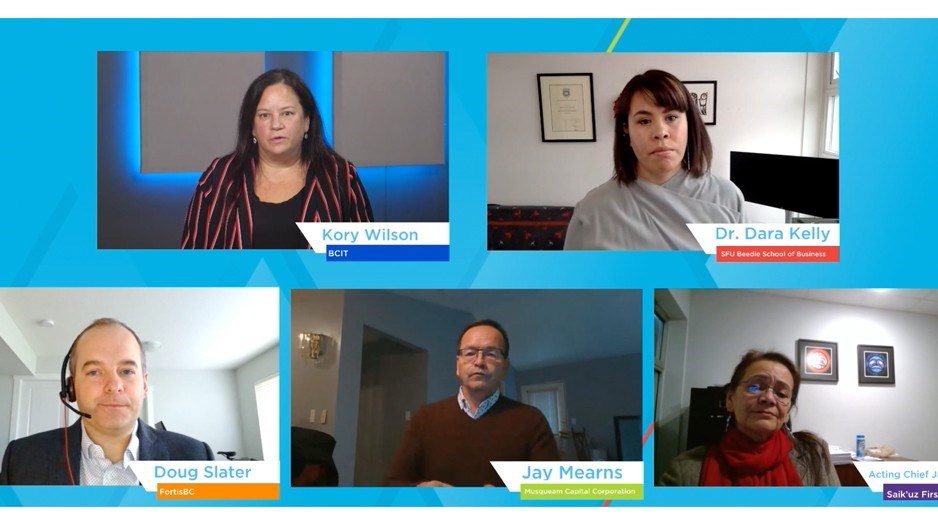With over 200 distinct nations and 30 languages, B.C.’s Indigenous population is diffuse and diverse.
However, there are common strategies First Nations can pursue to ensure economic prosperity while adhering to their cultural priorities, say Indigenous economic partnerships experts.
“The key to maintaining successful partnerships with First Nations is balance,” said Kory Wilson, British Columbia Institute of Technology executive director of Indigenous initiatives and partnerships while hosting a virtual event on Indigenous opportunities for the Greater Vancouver Board of Trade.
“You have to think in terms of physical, mental, emotional, spiritual – those are the four areas,” said acting Saik’uz First Nation Chief Jackie Thomas. “In all of our agreements our community has, we try to ensure there’s a government part, there’s a financial part, there’s an education and practical training part as well as looking after language and cultural ceremonies.”
According to Dara Kelly, assistant professor of business and society at Simon Fraser University, the philosophy not only applies to partnerships between First Nations and businesses or governments, but is also fundamental to measuring economic success.
The economy isn’t just numbers on an income statement or the Dow Jones. It’s about the collective well-being of those participating in it, Kelly said, adding that it’s important to look beyond GDP and other traditional economic measurements and understand the broader effects the economy has on people’s welfare.
In practical terms, this means measuring the success of an economy using metrics such wealth redistribution in addition to wealth accumulation.
On a government level, this means incorporating Indigenous principles into fiscal budgets, an approach recently adopted in New Zealand’s “well-being budget,” which prioritizes happiness over short-term output measures. Under this approach, government resources are focused on five key issues: improving mental health, reducing child poverty, addressing Indigenous inequality, shifting to a green economy and increasing technology skills training. The goal is not only to address these particular issues but also to create an environment that fosters self-sufficiency for all communities.
Jay Mearns, director of business development for Musqueam Capital Corp., said it is important for businesses to incorporate Indigenous principles of mental and physical well-being into projects.
For Musqueam Capital, the Musqueam Nation’s asset management and business development arm, Mearns said its partnerships are aimed at building independence and self-sustainability for the Musqueam people.
“It’s not just about hiring someone for a project opportunity, it’s about commitments on long-term relationships with the intent of developing our people into something meaningfully and professionally,” Mearns said. “Working with industry through the things that [Musqueam Capital Corp.] is doing is about creating awareness and creating a reconciliatory approach to how we will work together for mutual benefit.”•




